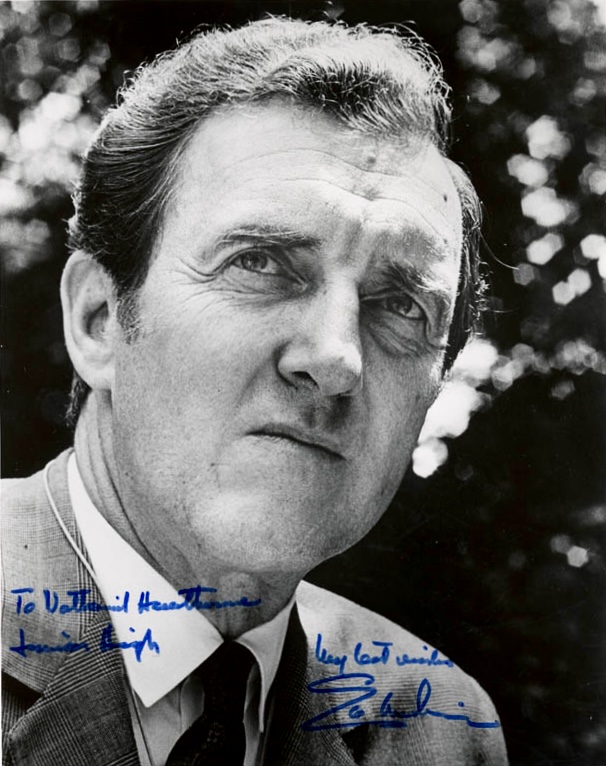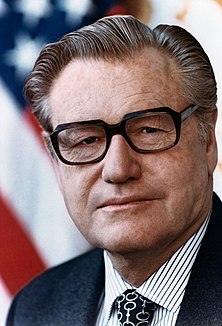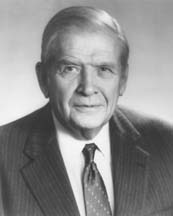
The 1968 United States presidential election was the 46th quadrennial presidential election. It was held on Tuesday, November 5, 1968. The Republican nominee, former Vice President Richard Nixon, defeated the Democratic nominee, incumbent Vice President Hubert Humphrey. Analysts have argued the election of 1968 was a major realigning election as it permanently disrupted the New Deal Coalition that had dominated presidential politics for 36 years.

The 1972 United States presidential election was the 47th quadrennial presidential election. It was held on Tuesday, November 7, 1972. Incumbent Republican President Richard Nixon defeated Democratic Senator George McGovern of South Dakota.
The 1972 Democratic National Convention was the presidential nominating convention of the Democratic Party for the 1972 presidential election. It was held at Miami Beach Convention Center in Miami Beach, Florida, on July 10 – 13, 1972. Lawrence F. O'Brien served as permanent chairman of the convention, while Yvonne Braithwaite Burke served as vice-chair, becoming the first African American and the first woman of color to hold that position. On the last day of the convention, Lawrence F. O'Brien departed and Burke was left to preside for about fourteen hours.
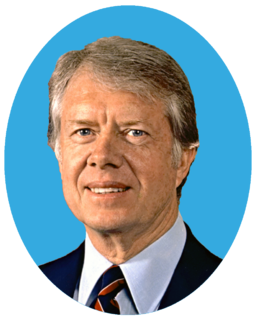
The 1976 Democratic National Convention met at Madison Square Garden in New York City, from July 12 to July 15, 1976. The assembled United States Democratic Party delegates at the convention nominated former Governor Jimmy Carter of Georgia for President and Senator Walter Mondale of Minnesota for Vice President. John Glenn and Barbara Jordan gave the keynote addresses. Jordan's keynote address made her the first African-American woman to deliver the keynote address at a Democratic National Convention. It was listed as #5 in American Rhetoric's Top 100 Speeches of the 20th Century. The convention was the first in New York City since the 103-ballot 1924 convention.
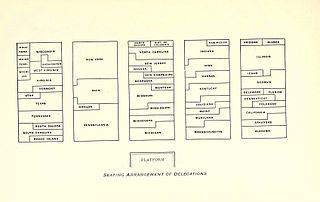
The 1896 Democratic National Convention, held at the Chicago Coliseum from July 7 to July 11, was the scene of William Jennings Bryan's nomination as the Democratic presidential candidate for the 1896 U.S. presidential election.

The 1972 Democratic presidential primaries were the selection process by which voters of the Democratic Party chose its nominee for President of the United States in the 1972 U.S. presidential election. Senator George McGovern of South Dakota was selected as the nominee through a series of primary elections, caucuses, and state party conventions, culminating in the 1972 Democratic National Convention held from July 10 to July 13, 1972, in Miami, Florida.

The 1976 Democratic presidential primaries were the selection process by which voters of the Democratic Party chose its nominee for President of the United States in the 1976 U.S. presidential election. Former Georgia Governor Jimmy Carter was selected as the nominee through a series of primary elections and caucuses culminating in the 1976 Democratic National Convention held from July 12 to July 15, 1976, in New York City. This is the earliest Democratic Convention where the nominee is still alive as of 2019.
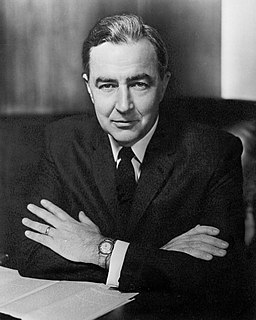
The 1968 Democratic presidential primaries were the selection process by which voters of the Democratic Party chose its nominee for President of the United States in the 1968 U.S. presidential election. Incumbent Vice President Hubert Humphrey was selected as the nominee in the 1968 Democratic National Convention held from August 26 to August 29, 1968, in Chicago, Illinois.
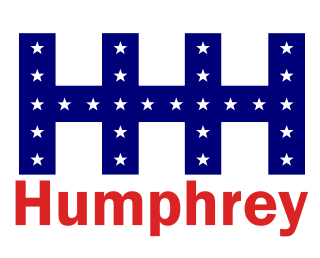
The Hubert Humphrey presidential campaign of 1968 began when Vice President of the United States Hubert Humphrey of Minnesota decided to seek the Democratic Party nomination for President of the United States following the announcement by President Lyndon B. Johnson that he would not seek the party's nomination. Johnson had been stalled by the anti-Vietnam War candidacy of Senator Eugene McCarthy of Minnesota, who along with Senator Robert F. Kennedy of New York, became the main opponents for Humphrey. The contest between the men featured a battle for control of the Democratic Party, and cast Humphrey's "old politics", against the "new politics" of McCarthy and Kennedy. The main cause of the division was the Vietnam War, which intensified during Humphrey's tenure as Vice President and grew increasingly unpopular.
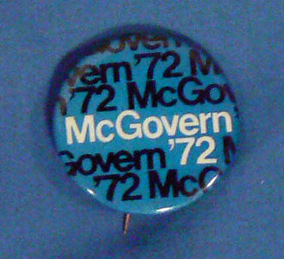
The George McGovern presidential campaign of 1972 began when United States Senator George McGovern from South Dakota launched his second candidacy for the Presidency of the United States in an ultimately unsuccessful bid to win the 1972 presidential election, winning only in the District of Columbia and the state of Massachusetts. McGovern vied to become the first South Dakota native to become president.

The 1968 United States presidential election in New York took place on November 5, 1968. All fifty states and the District of Columbia, were part of the 1968 United States presidential election. New York voters chose forty three electors to the Electoral College, which selected the president and vice president.

The 1968 United States presidential election in Massachusetts took place on November 5, 1968, as part of the 1968 United States presidential election, which was held throughout all 50 states and D.C. Voters chose 14 representatives, or electors to the Electoral College, who voted for president and vice president.

The 1968 United States presidential election in Maine took place on November 5, 1968, as part of the 1968 United States presidential election, which was held throughout all fifty states and D.C. Voters chose four representatives, or electors to the Electoral College, who voted for president and vice president.

This article lists those who were potential candidates for the Democratic nomination for Vice President of the United States in the 1976 election. Former Georgia Governor Jimmy Carter won the 1976 Democratic nomination for President of the United States, and chose Minnesota Senator Walter Mondale as his running mate. According to Joel Goldstein, a legal professor and the author of several works on the vice presidency, 1976 marked the beginning of the modern vice presidential selection process, with candidates undergoing extensive vetting. Carter thought that the vice president could be an important asset for a president, and Mondale became a major part of Carter's campaign. The choice of Mondale helped Carter, a Southern "outsider" with little experience in Washington, rally the Democratic base to his candidacy. The Carter-Mondale ticket defeated the Ford-Dole ticket in the 1976 election.
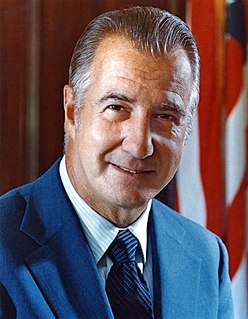
This article lists those who were potential candidates for the Republican nomination for Vice President of the United States in the 1968 election. After winning the Republican presidential nomination at the 1968 Republican National Convention, former Vice President Richard Nixon convened a series of meetings with close advisers and party leaders such as Strom Thurmond in order to choose his running mate. Nixon ultimately asked the convention to nominate Maryland Governor Spiro Agnew as his running mate. By a large margin, Agnew won the vice presidential nomination on the first ballot over Michigan Governor George W. Romney, who was supported by a faction of liberal Republicans. Nixon chose Agnew because he wanted a centrist who was broadly acceptable to the party, had experience with domestic issues, and appealed to Southern voters. The Nixon-Agnew ticket defeated the Humphrey-Muskie ticket, and also won re-election in 1972, defeating the McGovern-Shriver ticket. However, Agnew was forced to resign as Vice President in 1973 due to a controversy regarding his personal taxes.

This article lists those who were potential candidates for the Democratic nomination for Vice President of the United States in the 1964 election. After the assassination of Democratic President John F. Kennedy in 1963, Vice President Lyndon B. Johnson ascended to the presidency. As the 25th Amendment had not yet been passed, there was no process for filling the office of vice president until the next election, and Speaker of the House John William McCormack was next-in-line for the presidency from November 1963 to January 1965. Johnson carefully considered his running mate for the 1964 election, and put up "trial balloons" in the media about possible running mates. Among those speculated at the time were Connecticut Senators Abraham Ribicoff and Thomas J. Dodd, Secretary of Defense Robert McNamara, New York Mayor Robert Wagner, California Governor Pat Brown, and Minnesota Senators Hubert Humphrey and Eugene McCarthy. Many Democrats also hoped for Attorney General Robert F. Kennedy, the brother of former President John F. Kennedy, but Johnson carefully maneuvered to keep Kennedy off the ticket due to personal enmity between the two. After an interview in the Oval Office, Johnson announced his choice of Humphrey, who provided geographic balance to the ticket and had been a key lieutenant for Johnson in the Senate, particularly in regards to the 1964 Civil Rights Act. Humphrey then easily won the vice presidential nomination on the first ballot at the 1964 Democratic National Convention. The Johnson-Humphrey ticket went on to beat the Goldwater-Miller ticket in the 1964 election. Humphrey later won the 1968 Democratic presidential nomination over McCarthy, but lost the election to Richard Nixon.
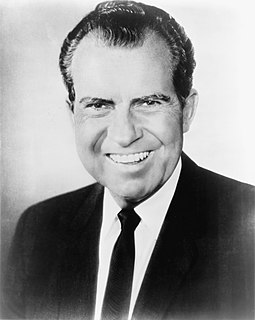
The 1968 United States presidential election in Wyoming took place on November 5, 1968. All 50 states and the District of Columbia were part of the 1968 United States presidential election. Wyoming voters chose three electors to the Electoral College, who voted for president and vice president.

The 1968 United States presidential election in Connecticut took place on November 5, 1968, as part of the 1968 United States presidential election, which was held throughout all 50 states and D.C. Voters chose eight representatives, or electors to the Electoral College, who voted for president and vice president.
